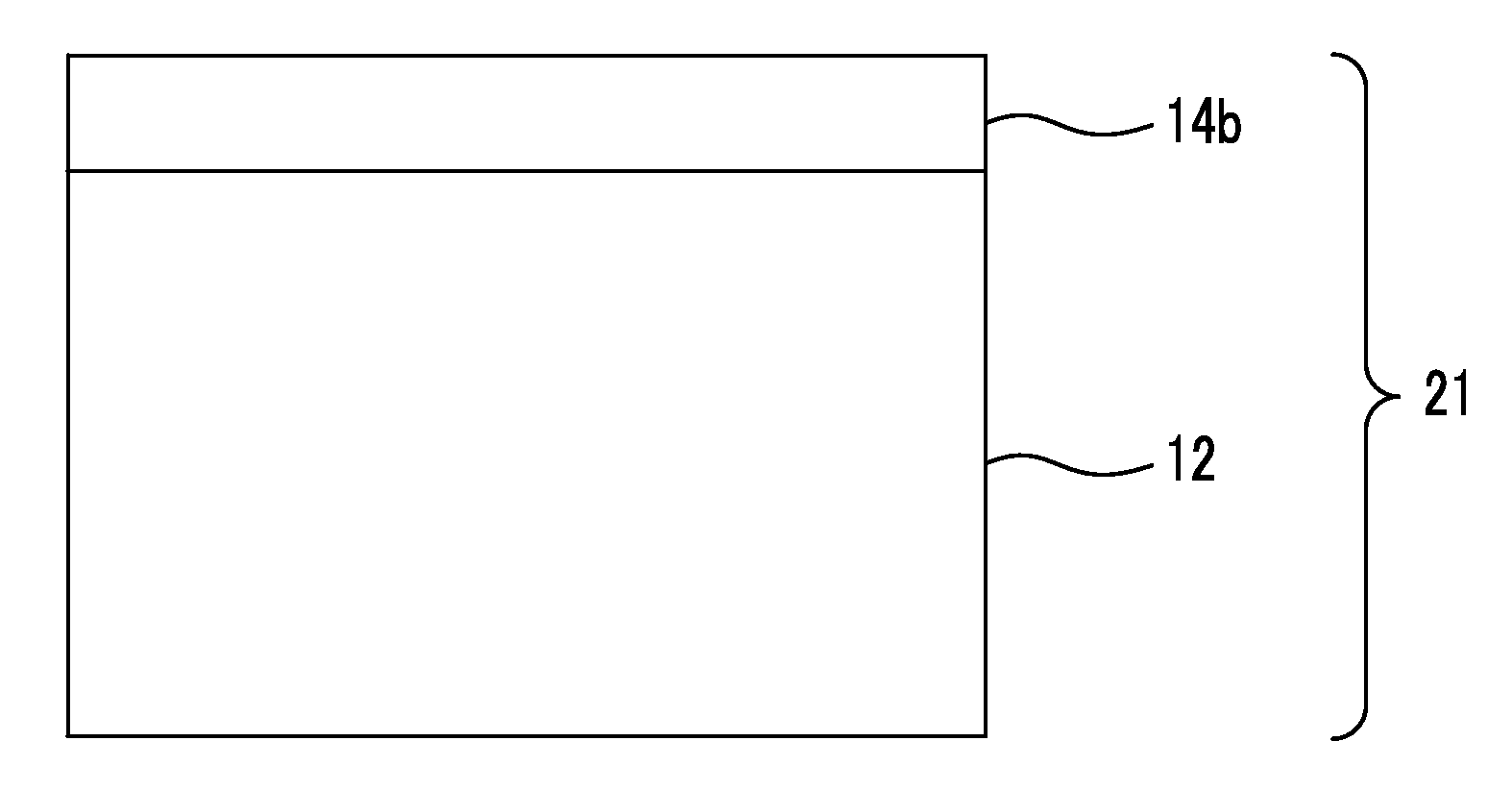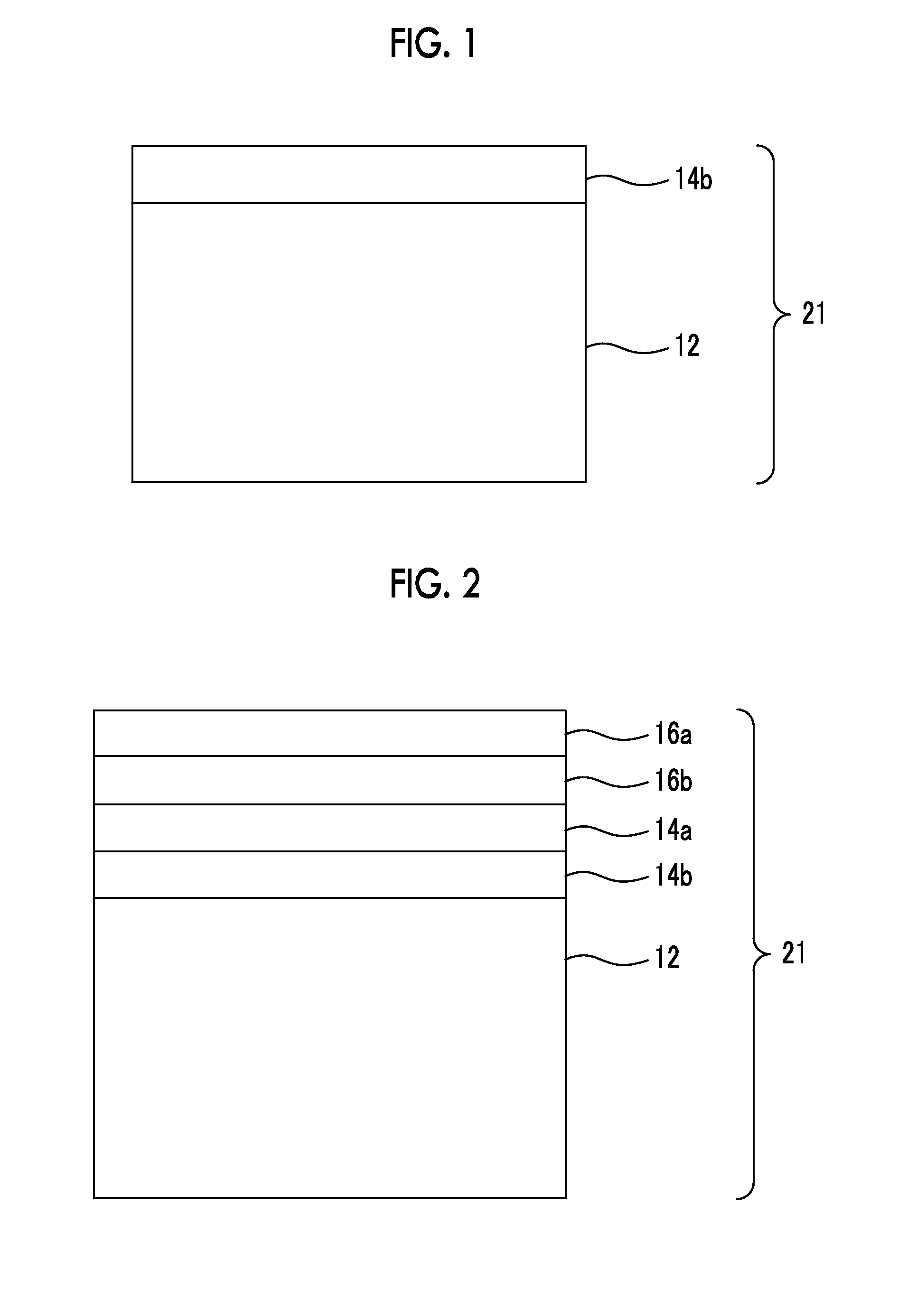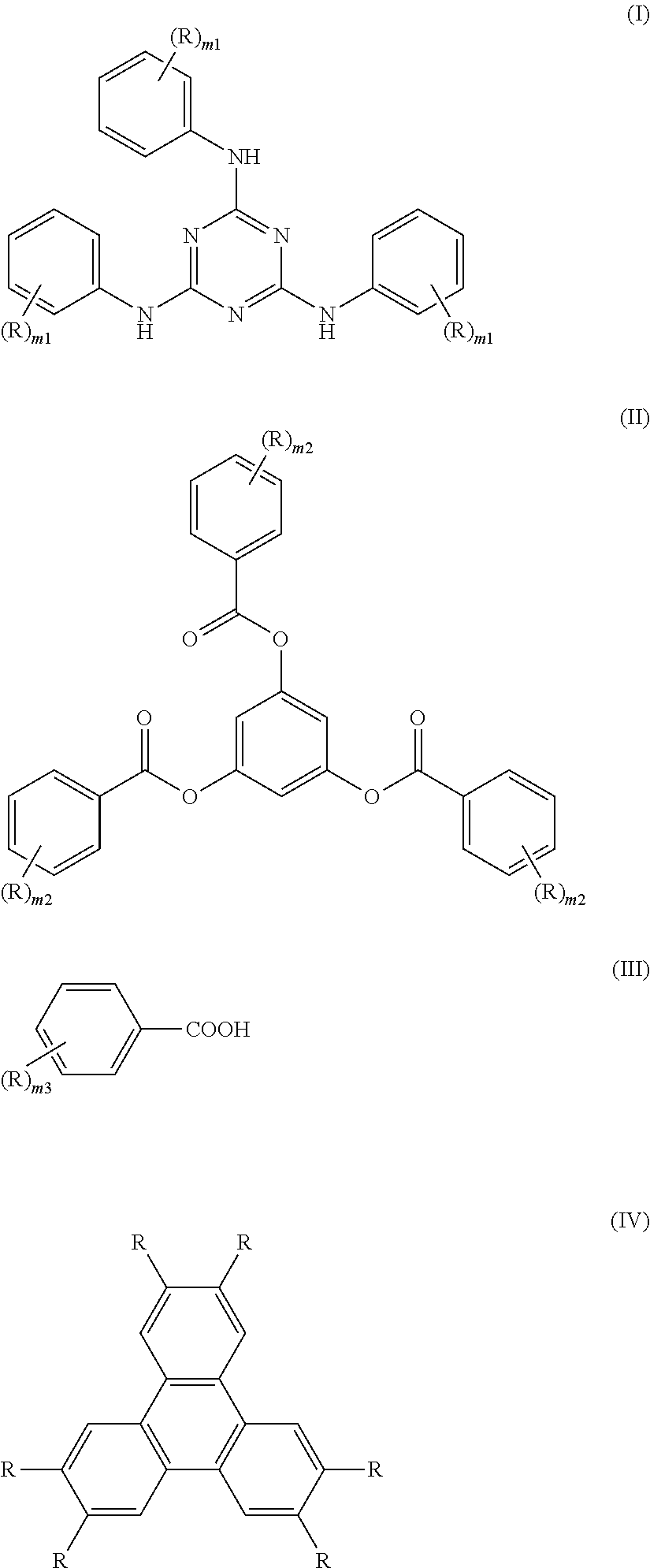Infrared light-reflecting film and production method thereof
a technology of infrared light and film, applied in the field of infrared lightreflecting film, can solve the problems of high production cost, low vacuum process productivity, and preventing toll collection system, and achieve the effect of low oxygen concentration and high molecular weigh
- Summary
- Abstract
- Description
- Claims
- Application Information
AI Technical Summary
Benefits of technology
Problems solved by technology
Method used
Image
Examples
example 1
Preparation of Coating Liquid (Polymerizable Liquid Crystal Composition)
[0206]First, a coating liquid having the composition of Example 1 shown in Table 1 below was prepared.
[0207](Coating, and Film Formation)
[0208]The prepared coating liquid was coated onto the surface of a PET film having a thickness of 50 μm, manufactured by FUJIFILM, at room temperature using a wire bar so as to have a thickness of the dried film of about 4 to 5 μm;
[0209]the film was dried at 30° C. for 30 seconds, and then heated in an atmosphere at 100° C. for 2 minutes to form a cholesteric liquid crystal phase; and
[0210]subsequently, controlling the output of the lamp using a metal halide lamp manufactured by Eye Graphics at 30° C., this was irradiated with UV rays in a nitrogen-purged atmosphere at a dose of 28.3 mW / cm2 for 3 seconds to fix the cholesteric liquid crystal phase and to form an infrared light-reflecting film of Example 1. Further, the amount of the residual solvent after the drying step ((the ...
example 15
[0227]In the same manner as in Example 1 except that the number of the infrared light-reflecting layers was 3, an infrared light-reflecting film was produced. With respect to the obtained infrared light-reflecting film, the haze was measured by the same method as in Example 1. As a result, even when the number of the infrared light-reflecting layers was 3, an infrared light-reflecting film having the same alignment as in Example 1 was obtained.
example 16
[0228]In the same manner as above except that the infrared light-reflecting layer (also referred to as a first layer) laminated in Example 1 was cooled to room temperature, and then the chiral agent (B-3) for left-handed twisting used in Example 1 was changed to the chiral agent (B-4) for right-handed twisting as described below, a second layer was formed on the first layer of the infrared light-reflecting layers. Further, the peak of the reflection wavelength of the light-reflecting film after formation of the second layer was 1000 nm. In addition, in the same manner as in Example 1 except that the chiral agent (B-3) for left-handed twisting and the chiral agent (B-4) for right-handed twisting were used alternately on the second layer after adjusting to such a concentration that the peak of the reflection wavelength was 1120 nm, the third layer and the fourth layer were laminated. Subsequently, in the same manner, as in Example 1 except that the chiral agent (B-3) for left-handed t...
PUM
| Property | Measurement | Unit |
|---|---|---|
| Percent by mass | aaaaa | aaaaa |
| Percent by mass | aaaaa | aaaaa |
| Percent by mass | aaaaa | aaaaa |
Abstract
Description
Claims
Application Information
 Login to View More
Login to View More - R&D
- Intellectual Property
- Life Sciences
- Materials
- Tech Scout
- Unparalleled Data Quality
- Higher Quality Content
- 60% Fewer Hallucinations
Browse by: Latest US Patents, China's latest patents, Technical Efficacy Thesaurus, Application Domain, Technology Topic, Popular Technical Reports.
© 2025 PatSnap. All rights reserved.Legal|Privacy policy|Modern Slavery Act Transparency Statement|Sitemap|About US| Contact US: help@patsnap.com



